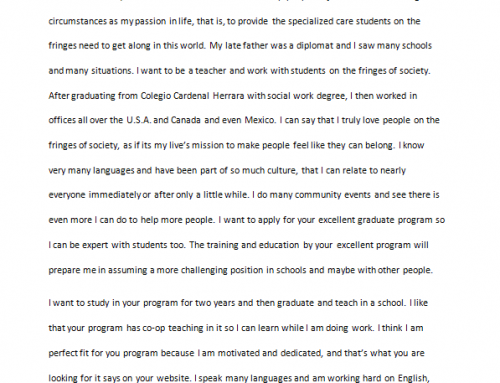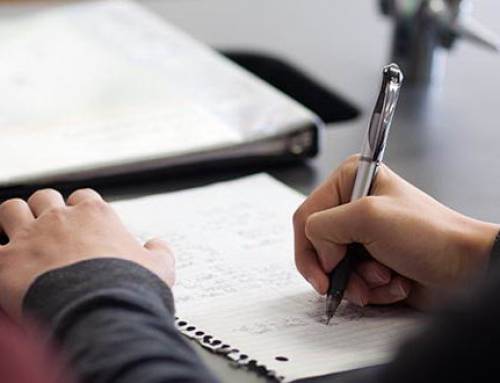A statement of:
overall aims and specific objectives (unless included in terms of reference)
method/procedure used (unless included in separate section)
key findings
main conclusions and recommendations. These may form sections or chapters. You should include just a little background/context and indicate the reasons for writing the report. It should cover the aims of the report, what was found and what, if any, action is called for. Master it now and writing reports won’t have to be a pain.
Try not to gather too much information. Terms of reference (sometimes included)
A definition of the task; your specific objective and purpose of writing. You may include your terms of reference and procedure/research methods if not covered elsewhere. In addition, there is at times some blurring between what “essays”, “reports” and “assignments” are, so again check within your department. Do NOT use ‘suggest to’. Check for consistency in numbering of chapters, sections and appendices.
As a student, these reports might be the bane of your life – but the truth is, you’ll have to write them no matter where you go. The record of a sequence of events
interpretation of the significance of these events or facts
evaluation of the facts or results of research presented
discussion of the outcomes of a decision or course of action
conclusions
recommendations. A report is a form of communication in one or more of the . This section describes an organizational structure commonly used to report experimental research in many scientific disciplines, the IMRAD format: Introduction, . If time allows, proof read more than once. Report writing is an essential skill in many disciplines. : Initial preparation: Planning and research: Report. Title page (always included)
This should normally include the title, your name and the name of the tutor to whom it is being submitted, date of submission, your course/department, and if applicable, the name of the person and/or organisation who has commissioned the report. Make sure you develop each paragraph sufficiently (usually a minimum of 5/6 sentences).
This guide offers a general introduction to report writing; be sure also to take account of specific instructions provided by your department. Check within your department which of these you should include. : Initial preparation: Planning and research: Report. Are the points concisely but clearly explained and supported by relevant evidence. This first stage is the most important. Master it now at university and writing reports in the workplace will be easier. From a simple work assessment report to the high-flying technical write-up, reports are a common form of workplace communication. 01, How to write an essay, also applies to reports. As with the whole report, all sources used should be acknowledged and correctly referenced. This section describes an organizational structure commonly used to report. It should provide the reader with a clear, helpful overview of the content of the report. Download activity handout for academic writing for reports exercise Subject lecturers can adapt the examples on the handout to use report extracts from their own disciplines, and to highlight the writing features they wish to focus upon. Make sure that the headings in this list correspond exactly with those in your main body.
About writing academic reports read more
When you’re making notes, always try to summarise the main points as concisely as possible. Describing Satisfaction – choosing between ‘satisfy’, ‘satisfied’, ‘satisfying’ and ‘satisfactory’, etc. It should cover the aims of the report, what was found and what, if any, action is called for. This section describes an organizational structure commonly used to report experimental research in many scientific disciplines. If time allows, proof read more than once. The main body of the report is where you discuss your material.
Below are the possible components of a report, in the order in which they would appear. Consider who the report is for and why it is being written. Master it now and writing reports won’t have to be a pain. Although the main headings are standard for many scientific fields, details may vary; check with your instructor, or, if submitting an article to a journal, refer to the instructions to authors. Style
Always use clear and concise English, avoiding jargon and colloquial language.
About the Activity This activity is designed to help student identify the appropriate level and style of academic writing for reports. Materials and methods (included if applicable)
Similar to procedure, but more appropriate to scientific or engineering report writing. Try not to gather too much information. Various courses require you to write reports (as opposed to essays), notably business and scientific or technical subjects. What exactly is your report going to be about. This section describes an organizational structure commonly used to report. This format is usually not used in reports describing other kinds of research, such as field or case studies, in which headings are more likely to differ according to discipline. Be prepared to rearrange or rewrite sections in the light of your review. A report aims to inform and sometimes to persuade. All reports need to be clear, concise and well structured. Master it now and writing reports won’t have to be a pain.
Grammar Note:
To make suggestions and recommendations you should use ‘could + infinitive verb’ (if you are less sure), or ‘should + infinitive verb’ (if you are more sure). Your tutor will be looking for analysis and for a critical approach, when appropriate. ArrayAcademic report writing template: useful phrases and expressions to use in your report. Indicate topic/main finding to reader. The essential stages of successful report writing are described below. Begin by grouping together points that are related.
What conclusions can be drawn from the material. Your tutor will be looking for analysis and for a critical approach, when appropriate. Does it do what you’re being asked to do and what you say you’re going to do in your introduction. This guide is about the final stages in compiling your report. A report is a form of communication in one or more of the . For example, an environmental impact statement for a newspaper would be written in a style that best suits the non-technical reader. _______, for the valuable advice and support he has given me in the writing of this report. View the samples of our writing to ensure that you can entrust us with your academic assignment. This guide has been written to provide a general introduction to writing reports. By far the most common method in use at Birmingham City University is the Harvard method.
Begin by grouping together points that are related. Matching Nouns and Verbs for Reports – an exercise in choosing the right vocabulary for reports. Related exercises: Trends – this exercise introduces the vocabulary and grammar needed to describe trends. The report brief may outline the purpose, audience and problem or issue that your report must address, together with any specific requirements for format or structure. Identify priority areas for attention and seek out further information and advice. You will need to proof read your report for errors of spelling or grammar. Present your results in a logical order without comment. Write in fairly short sentences.
Aim for a writing style that is direct and precise
Be prepared to rearrange or rewrite sections in the light of your review. An effective report presents and analyses facts and evidence that are relevant to the specific problem or issue of the report brief. ArrayAcademic report writing template: useful phrases and expressions to use in your report. View This page can be viewed as a slideshow:. Much of the advice given in Guide 1. This guide is about the final stages in compiling your report.
Below are the possible components of a report, in the order in which they would appear. Speak to your tutor or an adviser from the Learning Development. As with the whole report, all sources used should be acknowledged and correctly referenced. As a student, these reports might be the bane of your life – but the truth is, you’ll have to write them no matter where you go. About the Activity This activity is designed to help student identify the appropriate level and style of academic writing for reports. Master it now and writing reports won’t have to be a pain. A report is written for a clear purpose and to a particular audience. Used in this way, feedback from tutors can provide a useful tool for developing and improving your writing skills.
Read also writing academic reports:
When you are asked to write a report you will usually be given a report brief which provides you with instructions and guidelines. A report is written for a clear purpose and to a particular audience. This guide is about the final stages in compiling your report. You may find the Mind Mapping technique useful: see Guide 2. An effective report presents and analyses facts and evidence that are relevant to the specific problem or issue of the report brief. The summary should briefly describe the content of the report.
Materials and methods (included if applicable)
Similar to procedure, but more appropriate to scientific or engineering report writing. Indicate topic/main finding to reader. What is your task timescale. As with the whole report, all sources used should be acknowledged and correctly referenced. Check that you have adhered to the instructions in your report brief regarding format and presentation. 3 Write the stages in any new procedure in the right order and describe in detail any new technique, or modifications of an established technique. Students have to identify the errors and rewrite the passages so they are more appropriate for an academic report.
Keep referring to your report brief to help you decide what is relevant information. Consider who the report is for and why it is being written. It is not enough to simply present the information you have gathered; you must relate it to the problem or issue described in the report brief. It could also be used as an activity after feedback on an assignment to highlight common writing errors shared by the class. Welding and alteration of ignimbrites). Our writers will provide you with authentic and quality. References (always included)
This is a list giving the full details of all the sources to which you have made reference within your text. Bernard Abbey and Oaks in Charnwood.
You will now be able to plan your research
Having organised your material into appropriate sections and headings you can begin to write the first draft of your report. Unlike essays, reports are written in sections with headings and sub-headings, which are usually numbered. Consider who the report is for and why it is being written. 20
Check everything carefully
Careful checking of your report before you print off the final version can make a big difference. Specific information and evidence are presented, analysed and applied to a particular problem or issue. Check that you have adhered to the instructions in your report brief regarding format and presentation.

